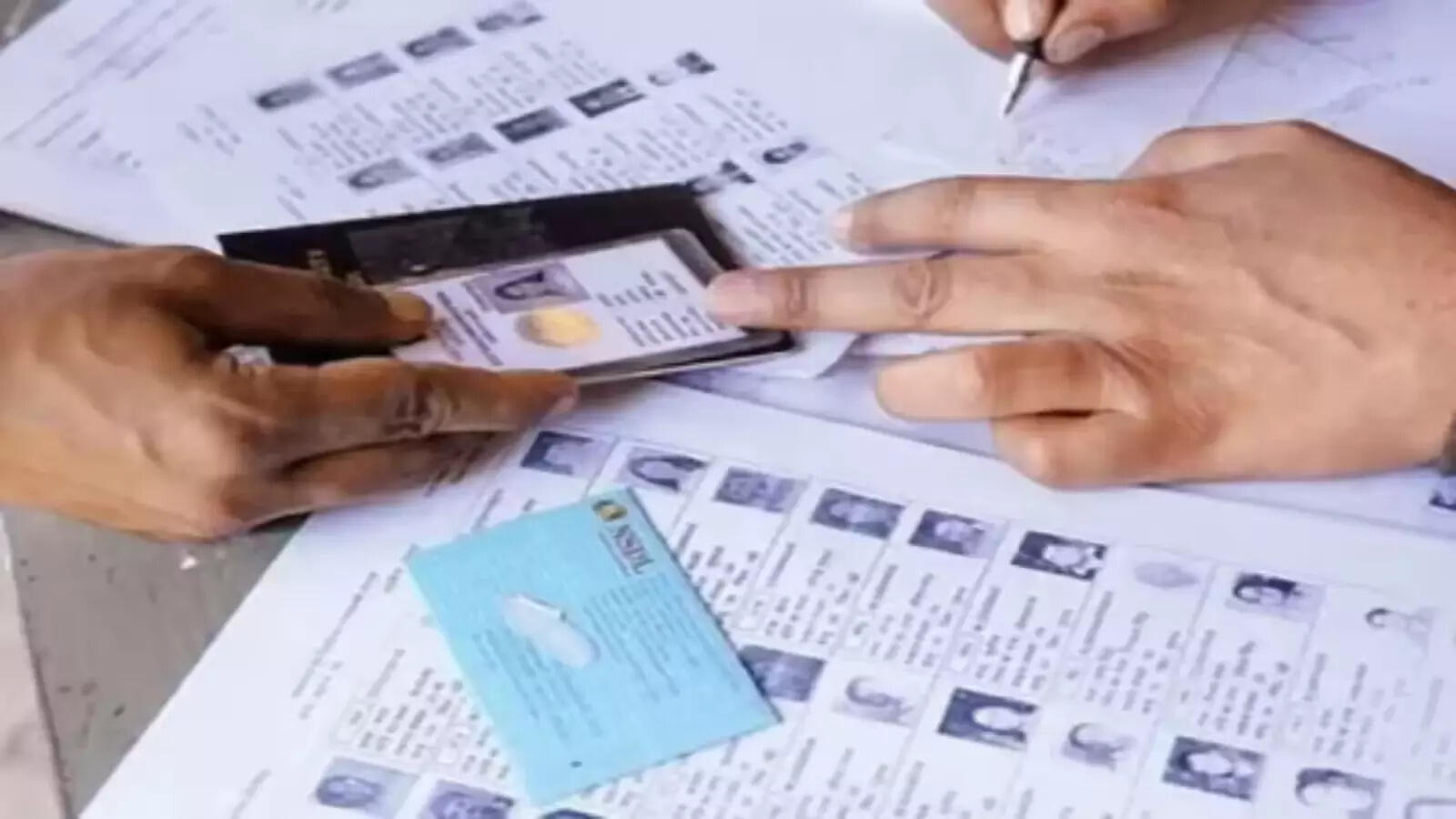
In Bihar’s recent electoral roll revision, nearly three lakh voters were listed under a single, peculiar entry: “House Number 0″. It is not the first time such anomalies have surfaced. In Delhi, too, homeless citizens and those living in unnumbered settlements have received voter identity cards with the same placeholder address. Election officials explain this as a necessary compromise – when no official house number exists, a “notional” one is created to ensure that nobody is excluded from the rolls.
The explanation may be technically correct, but politically it has become a flashpoint. Opposition parties have alleged that such practices open the door to duplication and fraud. For ordinary voters, the optics of entire neighborhoods reduced to “House Number 0” feed suspicions that the rolls are not entirely reliable. What this controversy really highlights, however, is not a flaw in the Election Commission‘s procedures but a deeper infrastructural gap: India has never built a nationwide, uniform house numbering system.
An invisible foundation
Most Indians take their addresses for granted. But in many towns and villages, numbers are missing, duplicated, or improvised. Informal colonies and urban slums often rely on descriptive landmarks – “behind the temple” or “near the banyan tree” – that may work locally but fail official scrutiny. When a government scheme requires a precise entry, administrators are forced to invent one.
This lack of a common system imposes hidden costs on daily life. Ambulances and fire brigades frequently waste precious minutes locating patients. Couriers delivering e-commerce packages often spend as much time hunting for an address as driving to it. Welfare benefits and tax demands go astray because households are not uniquely identified. Urban planners, too, struggle to model density or infrastructure needs without a granular, verifiable address layer.
In effect, millions of citizens are half-visible to the state. They may possess identity cards and ration books, but without a clear address their inclusion in services remains fragile.
What other countries have done
India is not alone in facing this challenge, but other nations have moved faster to resolve it. The United States adopted strict standards for house numbering through the Postal Service‘s Publication 28, which ensures that every dwelling has a consistent, machine-readable address. Kenya and South Korea have undertaken nationwide renumbering exercises to bring informal and rural settlements into the fold.
India has experimented on a smaller scale. MapMyIndia’s eLoc project assigns short digital codes to specific doorsteps. More recently, India Post launched DigiPin, a ten-character code that divides the country into small grid squares, each linked to GPS coordinates. Municipalities such as Bhubaneswar and Indore have begun installing QR-coded plates on homes, allowing citizens to pay taxes or summon services with a scan. These pilots demonstrate both feasibility and citizen acceptance. What is missing is a national rollout.
A census-linked opportunity
The forthcoming Census offers a rare chance to close this gap. Enumerators already visit every household, tablet in hand. If their workflow is extended slightly, they could confirm or assign a house number on the spot, log its GPS coordinates, and affix a small plate or sticker with a unique code.
Technically, this is straightforward. The Census questionnaire already includes a house-listing schedule; adding a field for “official house number” and a digital generator for unique codes would be a modest change. The data could feed into a National Address Registry, accessible to municipalities, India Post, emergency services and – crucially – the Election Commission.
Such a registry would not necessarily replace human-friendly street numbers. A family could still tell visitors they live at “House 12, Ward 5”. But behind that familiar label would lie a geocoded identifier that is unique and universally recognised.
Electoral dividends
For the Election Commission, the benefits would be immediate. Each voter’s entry could be tied to a verifiable dwelling. Duplicate registrations would be easier to detect; clusters of implausible voters at “address 0” would disappear. Notional numbering, once a stopgap, would give way to real numbers on real doors. Even homeless citizens could be included through designated shelter identifiers, rather than a meaningless “zero”.
This would not eliminate all controversy around electoral rolls, but it would remove one of the easiest avenues for doubt. In an era when trust in institutions is under strain, strengthening the basic infrastructure of verification is vital.
Challenges to anticipate
Of course, the path will not be smooth. Informal settlements and unauthorised colonies are politically sensitive. Numbering them requires local consent and may raise fears of eviction or taxation. Privacy concerns are also real: citizens may worry that precise geolocation could enable surveillance. Clear safeguards are therefore essential – limiting who can access the registry, and ensuring that the address database stores no personal details beyond location itself.
Administrative coordination is another hurdle. House numbering falls under local bodies, the Census under the Union government, and electoral rolls under state election machinery. A joint task force involving these institutions, perhaps anchored in the Ministry of Home Affairs, would be needed to align standards and resolve disputes.
The sensible way forward is phased. Select pilot projects – a dense city ward, a mid-sized town, and a rural block – could test the model before a national rollout. Municipal property surveys and state digital missions could be harnessed to keep the registry updated between censuses.
From zero to one
The controversy over “House Number 0” should not be dismissed as a passing embarrassment. It has drawn attention to a foundational gap in India’s governance. Without a reliable address layer, everything from tax collection to voter registration remains vulnerable to confusion and suspicion.
The Census provides an unprecedented chance to fix this at scale. By giving every dwelling a unique, geocoded identifier, India can not only strengthen its electoral rolls but also modernise service delivery, emergency response and urban planning. The technology is proven, the pilots are encouraging, and the need could not be clearer.
Democracy, after all, begins at home. But for that home to truly count, it must first have a number.
– Views expressed by Pratik Bavi who is a public policy consultant and has worked with the 48th Chief Secretary of Maharashtra.

